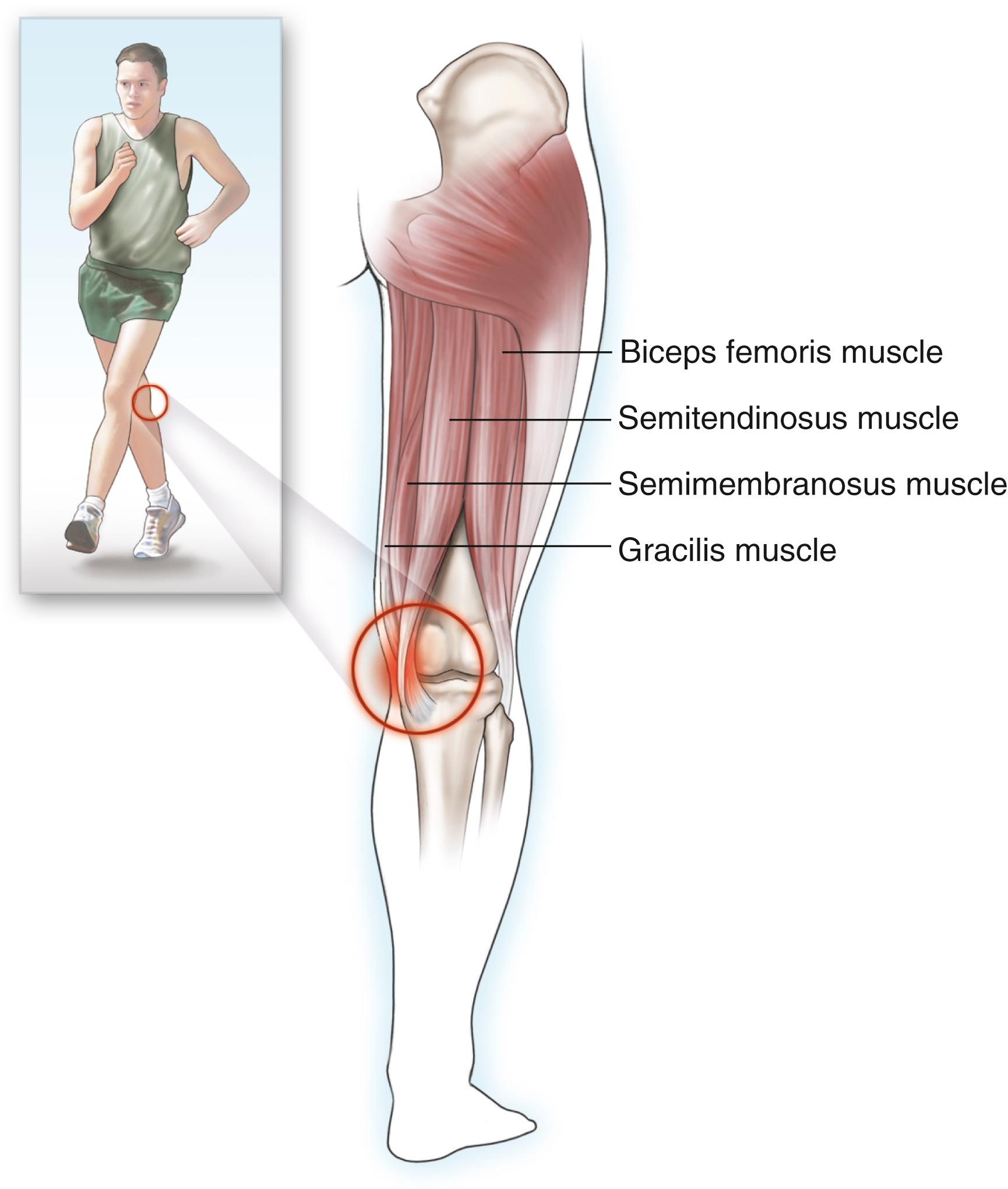Physical Address
304 North Cardinal St.
Dorchester Center, MA 02124
The musculotendinous insertion of the hamstring group of muscles is susceptible to the development of tendinitis for 2 reasons. First, the knee joint is subjected to significant repetitive motion under weight-bearing conditions. Second, the blood supply to the musculotendinous unit is poor, making healing of microtrauma difficult. Calcium deposition around the tendon may occur if the inflammation continues, complicating subsequent treatment. Tendinitis of the musculotendinous insertion of the hamstring frequently coexists with bursitis of the associated bursae of the knee joint, creating additional pain and functional disability.
The onset of hamstring tendinitis is usually acute, occurring after overuse or misuse of the muscle group. Inciting factors may include long-distance running, dancing injuries, or the vigorous use of exercise equipment for lower extremity strengthening. The pain is constant and severe, with sleep disturbance often reported. The patient may attempt to splint the inflamed tendon by holding the knee in a slightly flexed position and assuming a lurch-type antalgic gait. Patients with hamstring tendinitis exhibit severe pain to palpation over the tendinous insertion, with the medial portion of the tendon more commonly affected than the lateral portion ( Fig. 165.1 ). Crepitus or “creaking” may be present when the tendon is palpated while the patient flexes the affected knee.

In addition to the previously mentioned pain, patients with hamstring tendinitis often experience a gradual decrease in functional ability with decreasing knee range of motion that makes simple everyday tasks, such as walking, climbing stairs, or getting into a car, quite difficult. With continued disuse, muscle wasting may occur and a stiff knee may develop.
Plain radiographs are indicated for all patients with posterior knee pain. On the basis of the patient’s clinical presentation, additional testing may be indicated, including complete blood cell count, sedimentation rate, and antinuclear antibody testing. Magnetic resonance imaging and ultrasound imaging of the knee are indicated if internal derangement, occult mass, or partial tendon disruption is suspected. The injection technique described later serves as both a diagnostic and a therapeutic maneuver.
Become a Clinical Tree membership for Full access and enjoy Unlimited articles
If you are a member. Log in here